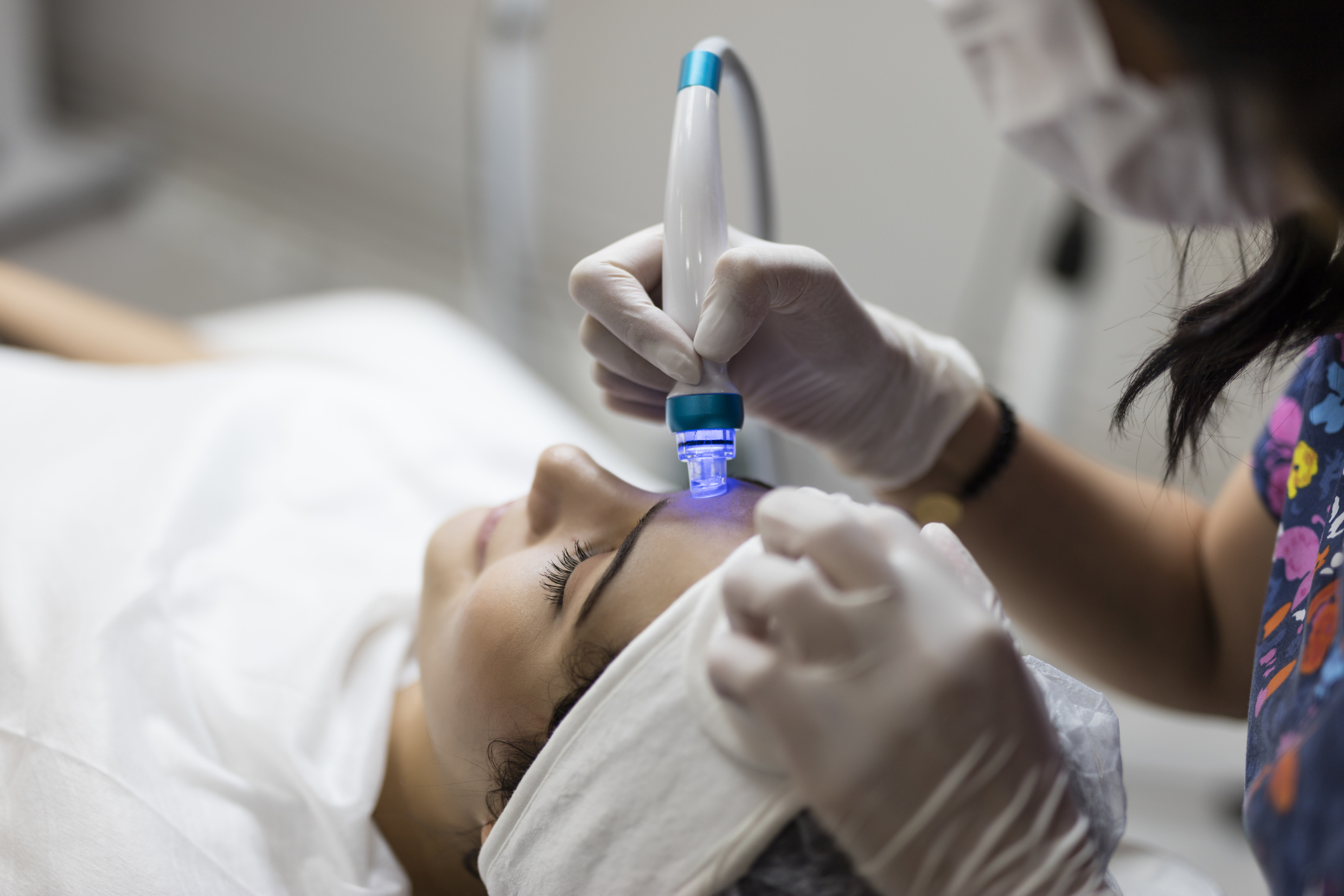
Summer is almost here, which means the weather is warmer, the days are longer and parents are gearing up for big schedule changes. It's a favorite season for many children, and for good reason — along with a much-needed break from school, the summer provides plenty of opportunities for fun.
The season also presents unique risks to children's health and safety, according to experts. Whether kids are enjoying the summer at home, going on vacations or heading to camp, it's important to ensure they are having fun safely.
We spoke to pediatric emergency medicine physicians about some of the top reasons why children end up in the ER during summer, risky activities they wouldn't let their own children do and how parents can ensure their kids stay safe this summer.
Play with fireworks
Get Boston local news, weather forecasts, lifestyle and entertainment stories to your inbox. Sign up for NBC Boston’s newsletters.
When asked about this nostalgic summer activity, the experts unanimously agreed that fireworks should be left to the professionals and enjoyed from a safe distance. That means no home fireworks, even the legal ones.
Every summer, children come into the emergency room with injuries related to fireworks — unsurprisingly, these tend to spike around the Fourth of July, Dr. Brent Kaziny, medical director of emergency management at Texas Children’s Hospital, tells TODAY.com.
These range from minor to third-degree burns, severe injuries to the face or eyes, and even losing fingers or hands, says Kaziny. In 2021, there were nine deaths in the U.S. due to fireworks, according to the U.S. Consumer Product Safety Commission.
Health
Fortunately, most of these injuries can be prevented by not setting off fireworks at home, the experts note. If parents still want to take that risk, Kaziny emphasizes that children should never be allowed to touch or light any of the fireworks, including sparklers.
"Parents need to recognize that sparklers can get up to temperatures of over 2000 degrees Fahrenheit. It's essentially like a welding torch type of heat," says Kaziny. He recommends safer alternatives like glow sticks, especially for young children.
“Fireworks can be such a fun part of celebrating summer holidays, but it’s really not worth a devastating lifelong injury for your child,” Dr. Caitlin Farrell, a pediatric emergency medicine physician at Boston Children’s Hospital and injury prevention researcher at Harvard Medical School, tells TODAY.com.
Go in or around home pools unsupervised
Swimming pools are one of the joys of summer, but also one of the biggest dangers for kids, the experts say. Drowning is the leading cause of death for children ages 1 to 4 in the United States, and most of these drownings occur in home swimming pools, according to the U.S. Centers for Disease Control and Prevention.
Drownings and submersion injuries often happen quickly and quietly, Dr. Meghan Martin, a pediatric emergency medicine physician at Johns Hopkins All Children’s Hospital, tells TODAY.com. Because of this, she says kids should never be left in or around a swimming pool unsupervised. “Avoid stepping away, even for just a second, because that’s when it all happens,” says Martin.
Always make sure there is a designated "water-watcher" supervising kids in the pool, says Farrell, especially when young kids or toddlers are in the water. Parents should also teach children about pool safety as early as possible so they know not to get in the water when adults aren’t around and how to get out, Farrell adds.
Ideally, Farrell says home swimming pools should have a four-sided pool fence that self-locks or self-latches and is at least four feet tall.
"There is no hack for safety when it comes to kids around water; it's making sure you have your full attention on the kids and then early swim lessons," says Martin.
Swim in a rough ocean
Relaxing at the beach is a favorite summer activity for many families. However, the ocean presents unique risks — and drowning accidents in natural water (including oceans) are common among kids, especially those ages 5 to 14, according to CDC data.
Before going to the beach, always check the weather conditions and surf zone forecast, the experts note. "When you’re at the beach, make sure you’re paying attention to any advisories related to undertows or rip tides," says Kaziny. If there are beach flags raised or lifeguard warnings, always listen to them, he adds.
In any case, if the ocean seems too rough or the current too strong, Martin recommends parents keep children out entirely, especially if they are young or not strong swimmers.
When children do swim in the ocean, they should be accompanied by parents or closely supervised, Kaziny says. U.S. Coast Guard-approved life jackets or floaties can offer an extra layer of protection. "The biggest thing that you can do (to protect) younger kids is get them in swim lessons," says Kaziny.
Another beach safety tip from Martin is teaching children how to swim out of a rip tide, which involves swimming parallel to the beach and never against the current. "Even the strongest swimmers can fall into this trap," she notes.
Spend time in the sun without protection
Sunshine can be one of the best parts of summer, but it’s important for parents to take steps to protect children from too much exposure to ultraviolet (UV) rays, the experts note.
"Every summer, we see some really bad sunburns in kids, especially in infants," says Martin, adding these include second-degree sunburns that blister and damage the skin.
A history of one or more sunburns during childhood has been found to increase the risk of developing skin cancer as an adult, according to the CDC. Sun protection is key for both children and adults all summer long, the experts note.
"Babies under 6 months should really be out of direct sunlight," Kaziny says, adding that parents should bring an umbrella or pop-up shelter to provide extra shade when spending time outside.
All children should wear sunscreen before spending time out in the sun, says Kaziny. The sunscreen should be broad spectrum (protects against UVA/UVB rays), he adds, and at least SPF 15 but ideally higher. "Make sure that you’re reapplying regularly or at least every two hours and after they get in the water and dry off," says Kaziny.
In addition to sunscreen, Kaziny recommends children wear hats, sunglasses and protective clothing, like long-sleeved rash guards when possible.
If a child gets sunburned, parents should ensure they drink plenty of fluids and use over-the-counter pain relievers, as well as medicated lotions, says Kaziny. Parents should always reach out to their child's pediatrician if they have concerns or questions.
Children are also at risk for sun poisoning, a severe sunburn that can mimic an allergic reaction or flu-like illness, per the Cleveland Clinic — on top of scorched skin, it can cause a fever, chills, severe rash, nausea, dehydration and dizziness.
Ride a bike without a helmet
Bicycle accidents occur year-round, but they surge among kids in the summer when school is out and people are spending more time outside, says Farrell. Resulting injuries can range from cuts and bruises to broken bones and traumatic brain injuries, TODAY.com previously reported.
“When kids fall and hit their head or injure their brain ... these can be devastating injuries (with) a lifetime consequence,” says Farrell, adding that it’s essential for all children to wear helmets every time they ride a bike, no matter how close to home.
“Older kids often don’t think they need a helmet because they’re good bike riders and they’re not afraid of falling,” says Farrell. But emergency room visits prove otherwise. Adolescents and teens have some of the highest rates of bicycle-related injuries treated in emergency departments in the U.S., per the CDC.
No matter how experienced the bike rider, accidents can happen, the experts note. “(Helmets) are a simple safety rule that we know saves lives,” says Farrell, adding that parents should consistently wear helmets as well to model this behavior for children.
A final word on child safety
These aren't the only popular activities that are risky or unsafe for children. TODAY.com reported previously that pediatric emergency medicine also experts caution against these activities year-round: driving ATVs, jumping on trampolines unsupervised, touching unfamiliar pets, riding in the front seat of a car under the age of 13, and going into another home without asking about firearms.



